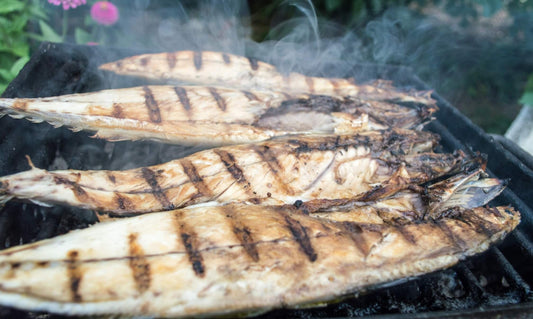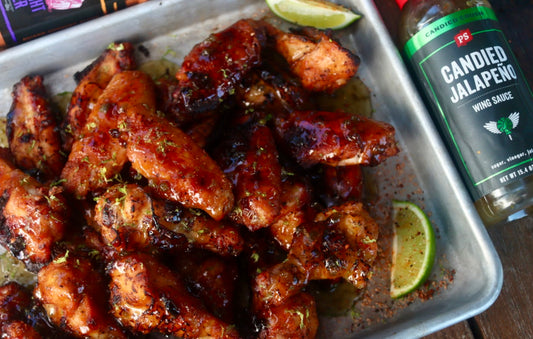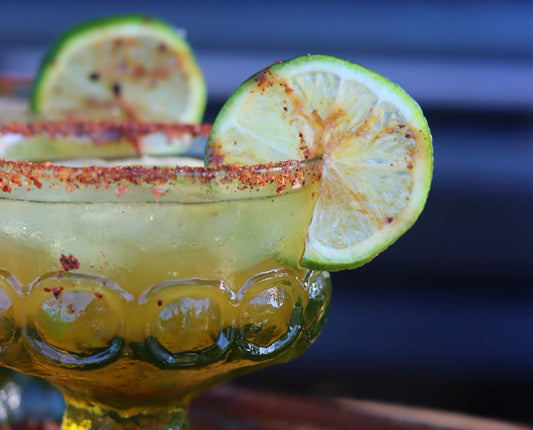How to Cook a Pig, Snout to Trotter (Complete Guide)
When it comes to cooking meats, nothing is quite as tasty or versatile as pork. In the United States, we consume about 64 pounds of pork per person per year. That’s a lot of pork! However, for most of us, we stick to the core parts of the pig, such as chops, loin, ribs or bacon (belly). While those are all tasty parts of this animal, there are still so many other delicious portions that you can and should try. For example, pig’s feet may seem a bit off-putting at first, but if they are prepared correctly, they are quite the delicacy.
With that in mind, we are going to look at each part of our favorite farm animal to see what we’ve been missing. If you’re a pork lover, then you’ll really appreciate knowing more about the different cuts of meat and preparation methods to make the ultimate pig feast. Not only will we highlight the tastiest parts, but we’ll take a look at the world of pork and how it’s consumed (or avoided) around the globe.
Strap yourself in and get your stomach ready, because we are about to take a full-length tour of our porcine friend to see how we can maximize our enjoyment of this succulent and tasty beast.

Different Parts/ Cuts of a pig
The head is usually not used for butchering in America, but that doesn’t mean you can’t find parts in some shops.
From the front of the head, there’s the snout, and after that, consider the jowls, ears, and rest of the head meat itself...You may even find pig brains in some butcher shops.
Moving past the head, we have the neck and the shoulder. Butchers call the upper side of the shoulder the Boston butt and the lower end is called the picnic shoulder.
The front legs are separated into two sections.The top portion is called the front hock and then you have the front feet.
The top center of the pig is called the loin. This section includes tenderloin, rib loin and center loin. This is also where you can find baby back ribs and rib tips.
On the bottom half of the pig is where the belly meat is. This section includes spare ribs, pork belly and bacon; it’s also called the side.
At the back of the pig is the ham section. This is where the butt and the back legs meet. The back legs are divided in the same way as the front. There’s a rear hock and foot for each leg.
Finally, there is the tail, which can be ground up or thrown away.
What you can cook with those parts (including any special dishes that different countries around the world make)
In the United States, pig heads are not very common. Around the world, people each them much more frequently. Usually, Asian markets such as China and the Philippines will use the whole head.
Snout meat is a delicacy in the Philippines. Ears are usually fried and eaten whole and are very popular in Asian countries and Eastern Europe.
Pork jowls can be found in some parts of America as a soul food entree.You might also find jowls in European dishes, like in Italy. They can be fried or cooked like bacon, depending on how they are cut.
Pork neck is usually used as a base for stock since it has a lot of bones in it.
The Boston butt, also known as pork shoulder, goes into pulled pork in the United States. Mexican cuisine uses pork shoulder for carnitas (shredded pork) and it is mostly popular in Hispanic countries.
The picnic shoulder is also used for pulled pork.It can be cut into thinner steaks for Philippine dishes.
The front hocks can be prepared in a variety of ways. This cut is popular is found in the southern United States, and parts of Europe and Asia. Usually, the skin is left on so that the meat inside becomes more tender.
Pork feet are usually used in the United States for dog food, but it can be part of a main dish in Asian markets, typically in a stew or broth.
The back fat of a pig is usually harvested for use as lard.
The loin section of the pig has a lot of good cuts, including tenderloin and baby back ribs.This is also where butchers find pork chops and country-style ribs… Trimmed boneless loin becomes Canadian bacon.
The side section of the pig is where you can find fattier meats. This includes bacon and pork belly. Usually, the nipples are sliced off and discarded. However, it’s becoming more common to find bacon that contains nipples. This is called, appropriately, “nipple bacon.”
The ham part of the pig is pretty self-explanatory. This is where you get whole sides of ham. Ham is either the shank end or the butt end. The shank has the bone in the center that connects to the leg.
Pig rectum is not usually used for eating. However, there are reports that imitation calamari is made with this cut of meat since It is hard and chewy, much like calamari.
Pigtails are a popular dish in Asian countries. They are usually prepared in a soup or stew. Tails can be rather meaty because they have fewer tendons than pig feet. They are eaten in places that also eat pig feet.
Pig skin can also be used as a dish. It can have fat attached or be scraped clean, and it is commonly fried to a crisp.
Pig intestines are usually eaten in countries where pork is a central part of the diet. The large intestine can be used as sausage casing. Some Philippine dishes use the small intestine, lungs, and the spleen in various dishes.
Pork brains are eaten in Eastern cultures, but they are not usually found in the United States.
Any parts you can’t use
Technically speaking, every section of the pig is edible if you prepare them correctly. In the United States, we usually avoid all of the intestines. Sometimes, sausages are cased in the large intestinal tract of the pig.
Pig testes are impossible to find in the United States since most male pigs are castrated at an early age.
Pig brains are edible, but they are not always safe to eat. Many U.S. markets ban them.
Pig lungs are illegal to sell in the United States. Tongue, kidney, liver, and heart are all eaten by other cultures where pig is a primary source of food. These parts are almost impossible to find in America.

Which parts you can grill and how you would do it
The best sections of the pig for the grill are those that don’t require special preparation. These are the most common parts that would work on an outdoor grill.
Pork chops cook very well. Marinate and season them as you wish and throw them on the grill.
Ribs are ideal for grill cooking, as long as you have them at a low heat for a long time. The best ribs cook for upwards of six hours or more.
Pork steaks usually have bone in them, but they grill as easily as pork chops.
Sliced tenderloin is great on the grill, or you can cook it low and slow like ribs.
Pork sausages are perfect for grilling as they cook quickly and evenly.
If you have ground pork, then it’s easy to make burgers to cook on the grill.
Thick cuts of pork belly will roast well on the grill, as does bacon. Bacon does cook quickly so it can get a little too crispy if you don’t watch it.
Shoulder roast has to be prepared the same as ribs: low and slow. Put it over indirect heat for up to eight hours. Smoke it, too, for a better flavor.
Countries and religions that do not eat pig/pork products
The two religions that expressly forbid the consumption of pork are Islam (Muslim) and Judaism (Jewish). The Jewish faith is not as strict about eating pork, which is why up to 57 percent of Jews admit to eating pork on a regular basis.
Pork is also not banned for sale in Israel.
Nine countries do prohibit the sale of pork products, and they are all Muslim-majority nations. These include Iran, Kuwait, Libya, Maldives, Mauritania, Oman, Pakistan, Qatar and Saudi Arabia. Other Arab nations such as Egypt and Turkey do allow pork sales, but most Muslims do not eat it.
Now it is your turn to smoke a pig!
As you can see, pork is a popular dish around the world. Here in the United States, we focus more on the thicker cuts of meat like the shoulder, ribs and ham shanks. In the southern part of the country, they are a bit more exotic with their pork choices.In southern states, you may find chefs cooking ham hocks, pig’s feet, and chitlins.
Elsewhere, especially on the eastern side of the globe in Asia, pork is much more of a delicacy. That’s why Asian countries use every part of the animal for meals. It’s not unusual to see items like pig ears, jowls and pig tails on the menu in the Far East or the Philippines.
When it comes to the most consumption of pork in the world, China comes out on top with the European Union and Montenegro coming in at numbers two and three, respectively. The United States is number eight on the list, behind other countries like South Korea, Belarus, and Taiwan.
Unlike other animals, each part of the pig is edible. That’s why see whole, roasted pigs offered at feasts and celebrations. Pork is the second-most consumed meat in America behind beef. Americans slaughter up to 115 million pigs a year.
Overall, pork is a delicious and versatile meat that is enjoyed the world over.
[/et_pb_text][/et_pb_column][/et_pb_row][/et_pb_section]







